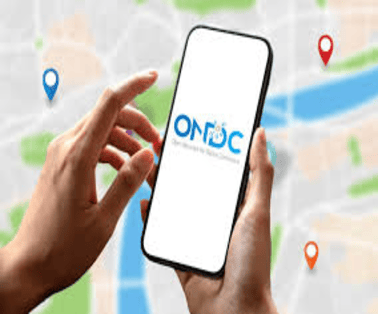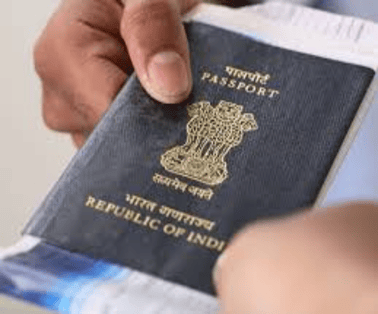The Himachal Pradesh government started a pilot program to connect Fair Price Shops to the Open Network for Digital Commerce (ONDC) platform.
Key Points
- The Department of Food and Public Distribution has launched a pilot initiative to onboard 11 fair price shops (FPS) in the Una and Hamirpur districts of Himachal Pradesh onto the Open Network Digital Commerce (ONDC) platform.
- Fair Price Shops are government-approved stores that sell essential goods at subsidized prices to people with ration cards.
- The Essential Commodities Act of 1955 allows some shops to sell necessary goods at subsidized rates.
- This is facilitated by implementing the Targeted Public Distribution System (TPDS).
- The initiative is part of ongoing efforts to modernise FPS operations and signify a paradigm shift in the digitalisation of essential services.
- The success of the pilot project will serve as a blueprint for future statewide and nationwide adoption.
- Recently, the Chennai Metro Rail became the first metro service to make ticketing services available for passengers on the ONDC platform. Kochi Metro, Kanpur Metro, Pune Metro, and other metro rail services are anticipated to join the network.
What is ONDC?
- The Open Network for Digital Commerce (ONDC) is a government initiative aimed at transforming the e-commerce market in India by shifting from a platform-centric model to an open-network model.
- It was launched in late 2021 under the Department for Promotion of Industry and Internal Trade (DPIIT) by the Ministry of Commerce as part of the Digital India push.
- ONDC works as a network of interconnected e-marketplaces through which sellers, including brands, can list and sell their products directly to customers bypassing any middlemen or intermediaries.
- Along with food delivery, ONDC also offers delivery services for groceries, home decor, cleaning essentials, and other products.
Features Of ONDC
- It is an open-source network set up to enable buyers and sellers to transact with each other irrespective of the e-commerce platform on which either of them are registered.
- It will enable local commerce across segments, such as mobility, grocery, food order and delivery, hotel booking and travel, among others, to be discovered and engaged by any network-enabled application.
- It comprises of buyer-side apps where consumers can place orders, seller-side apps that onboard merchants and display their listings, and logistics platforms that handle deliveries.
Objectives Of ONDC
- Democratisation and decentralization of e-Commerce
- Inclusivity and access for sellers, especially small and medium enterprises as well as local businesses
- Increased choices and independency for consumers
- Making goods and services cheaper
How ONDC Works
- ONDC functions on the basis of an open network where it will not be a single platform similar to Amazon or Flipkart but rather in the form of a gateway where buyers and sellers across different platforms will be able to connect
- Let us say a buyer wants to buy a product —he or she will go and search for it in any of the e-commerce apps and/or may go and look at different apps to get the best deal.
- However, switching from one app to another can be cumbersome and time-consuming. ONDC, a super aggregator network, is set to change this.
- When a buyer goes and searches for a product on the ONDC buyer app, he will get the results from different e-commerce platforms and listings, and get to compare prices, features, and discounts available in a single view
Significance of ONDC
- In India, more than 12 million sellers earn their livelihood by selling or reselling products and services.
- However, only 15,000 of these sellers (0.125% of the total) have enabled e-commerce.
- E‑retail has been out of reach for the majority of sellers, especially from small towns and rural areas.
- ONDC recognises the unique opportunity to increase e‑retail penetration from the existing 4.3% to its maximum potential in India.
Need for ONDC in India
- India has been a world leader in demonstrating the successful adoption of digital infrastructures at the population scale, such as UPI, AADHAAR, and more.
- ONDC (Open Network for Digital Commerce) is yet another tech-based initiative to transform the way e-commerce functions in the country by enabling e-commerce through an open protocol based on open-source specifications.
- The initiative will not only facilitate the rapid adoption of e-commerce but also boost and strengthen the growth of startups in India.
- By facilitating scalable and cost-effective e-commerce through the open protocol, ONDC will empower startups to grow collaboratively.
Benefits of ONDC
- Level Playing Field for e-commerce operators
- Wider digital market access for MSMEs and traders
- Drives competition and innovation in various sectors
- Creates a neutral and regulated platform
Challenges of ONDC
- Technological Complexity of Implementation
- Limited benefits as sellers are already free to list their products across various e-commerce platforms even in today’s platform-centric e-commerce model.
- Lack of clarity on addressing customer complaints and returns
- Major e-commerce players like Amazon and Flipkart hesitate to join ONDC due to loss of control
Conclusion
The Himachal Pradesh pilot program to onboard Fair Price Shops onto ONDC is a significant step toward transforming India’s digital commerce ecosystem. As ONDC scales across sectors and geographies, it promises to democratize access, boost economic opportunities for small businesses, and offer consumers greater choice and affordability.
To Download Monthly Current Affairs PDF Click here
Click here to get a free demo
Discover all about CLAT Exam



